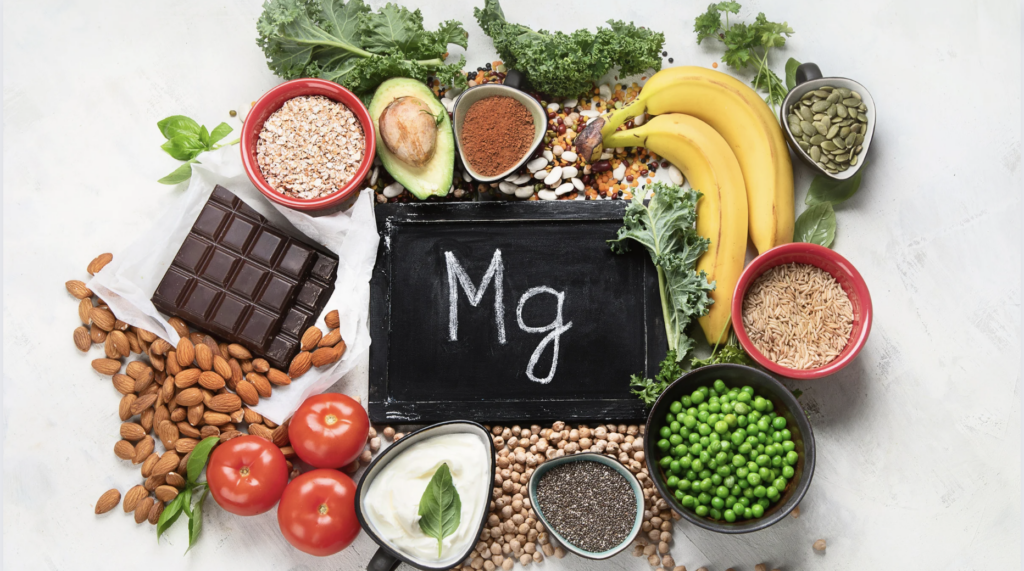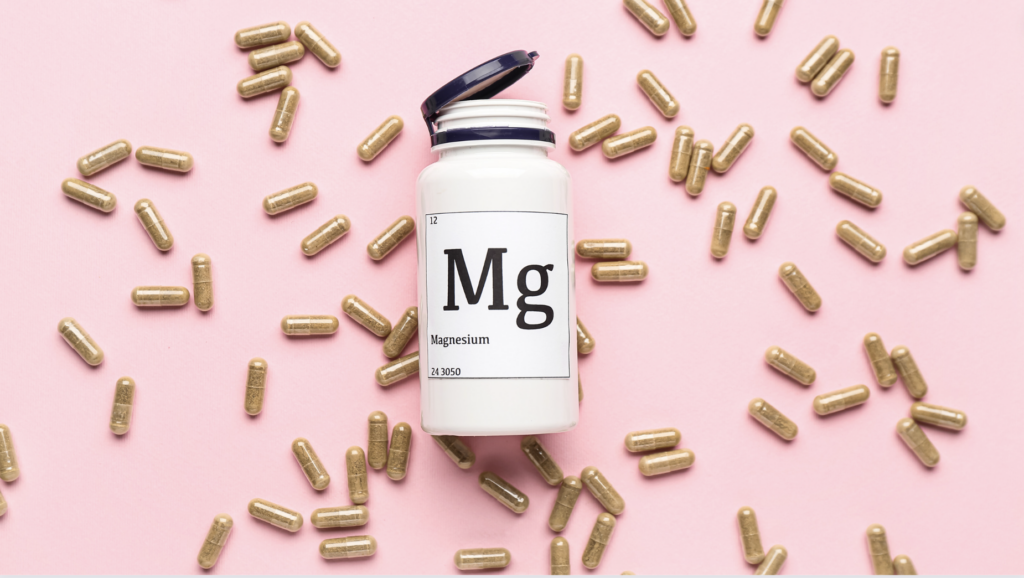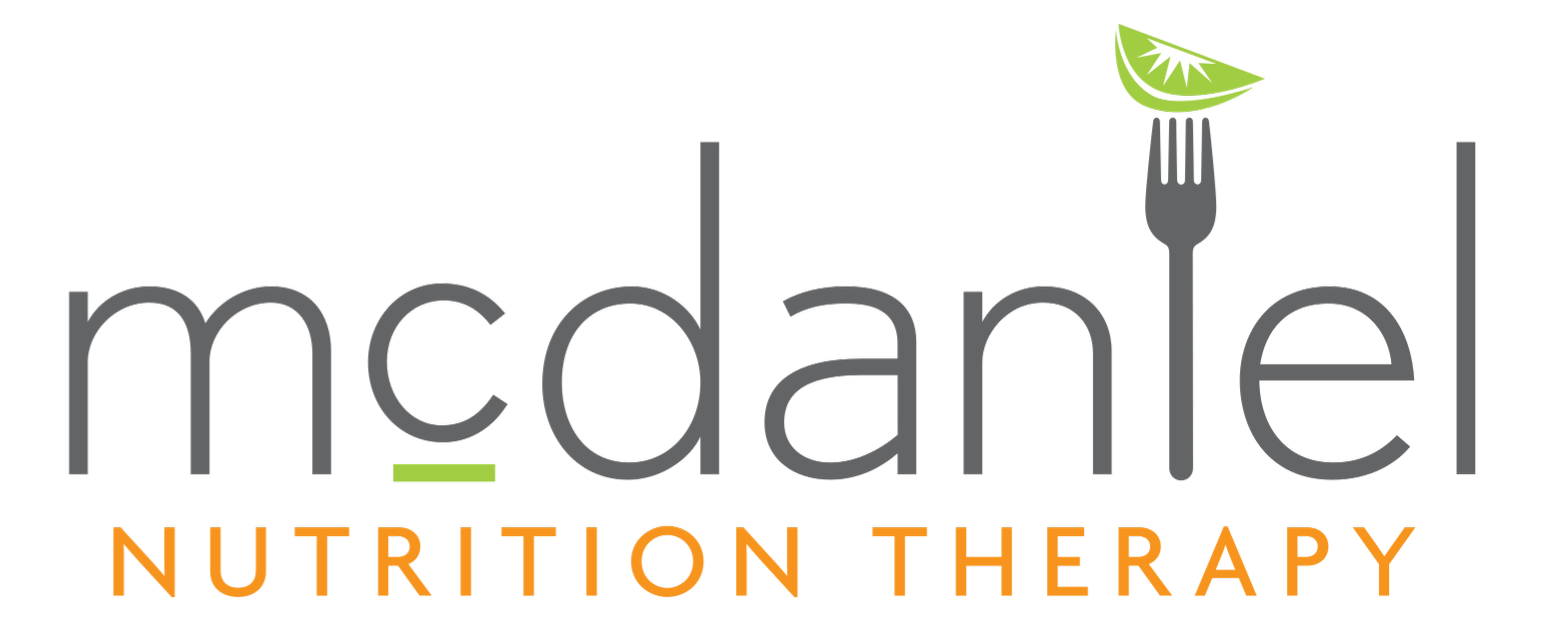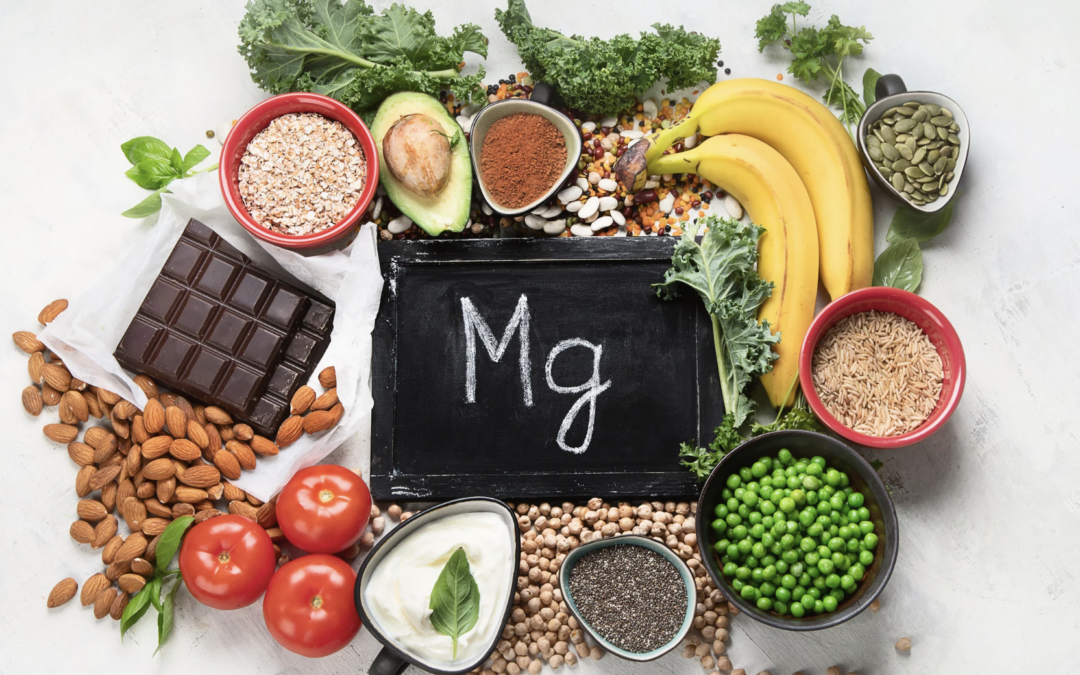How often do you think about the mineral, magnesium? Probably less than popularly discussed nutrients such as Vitamin D or Omega-3s. Research shows that ~50% of Americans don’t get enough magnesium in their diets. At McDaniel Nutrition, we’re always curious about why? What’s driving 1/2 the population to have this invisible deficiency?
Causes of Low Magnesium Intake
Magnesium levels have been falling since the start of the century. A few changes in both dietary patterns and food production are to blame:
- Increased intakes of vitamin D (mostly from supplements) and phosphorous (mostly from soda) drive increased needs for magnesium
- Increased intake of processed and ultra processed foods (which tend to be low in magnesium)
- Reduction of magnesium found in soil
How Much Do I need?
The current Recommended Dietary Allowance (RDA) for adults 19-51+ years is 400-420 mg daily for men and 310-320 mg for women. Pregnancy requires about 350-360 mg daily and lactation, 310-320 mg. Magnesium plays an important role in:
- Working with calcium to support bone strength
- Playing a role in regulating mood and risk of depression
- Decreasing migraines
- Breaking down sugars, resulting in better blood sugar and weight management
- Balancing hormones that regulate sleep
- Improving digestion
- Increasing skin quality
How Do I Know If I’m Deficient?
A low to moderate deficiency often goes unnoticed. To complicate matters even more, lab tests often can’t confirm deficiencies of the mineral as most of it is stored in bone and tissues. Certain deficiencies will still show normal levels.
Low magnesium is frustrating as it doesn’t cause symptoms until levels drop dramatically.
Symptoms of very low magnesium include:
- Nausea
- Constipation
- Headaches
- Night leg cramps
- Numbness or tingling in the legs or hands
- General body weakness
- Tremors
- Heart palpitations
Foods Rich in Magnesium

Eating a diet rich in the following magnesium-rich foods should support normal levels. The Dietary Reference Guidelines offer serving sizes for each of the foods below:
- Pumpkin seeds
- Chia seeds
- Almonds
- Spinach, cooked
- Cashews
- Whole-grain cereals
- Soymilk
- Black beans
- Edamame
- Peanut butter
The Array of Many Supplements Under the Sun

Don’t see many magnesium-rich foods you enjoy? Supplements may provide support. However, there are many supplements under the sun! Check out the list below for type and purpose:
Mg Citrate: This is magnesium combined with citric acid. It’s easily absorbed by your body.
Great for relieving constipation and improving digestion.
Mg Oxide: This is magnesium mixed with oxygen. Often used to treat migraines and constipation.
Mg Chloride: Magnesium combined with chlorine.
Good for improving digestion and magnesium levels in your body.
Mg Lactate: Magnesium plus lactic acid.
It’s gentler on the stomach than magnesium chloride and good for general health.
Mg Malate: Magnesium combined with malic acid. Helps with muscle pain and energy production.
Mg Taurate: Magnesium mixed with taurine, an amino acid. Good for heart health and blood sugar control.
Mg Glycinate: Magnesium with glycine, an amino acid. Helpful for relaxation, better sleep, and managing stress.
Let Us Help!
If you’re concerned about meeting your own micronutrient needs, let us help. Our custom meal planning services creates meal plans that are balanced not only from a macro (carb, protein and fat) standpoint, but also ensures you’re meeting your vitamin and mineral needs, too. Wouldn’t it be nice not to have think about “what should I eat?” to meet my needs? We’ll plan everything from your meals to snacks to grocery lists!

